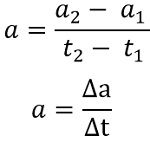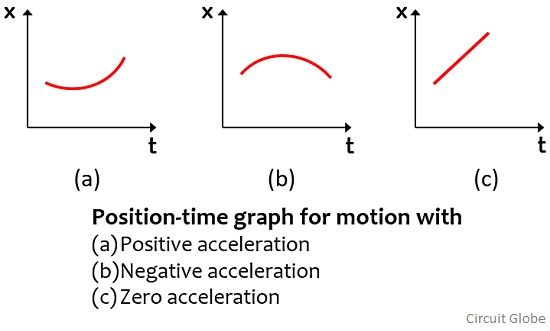Both velocity and acceleration are the two major terminologies associated with the motion of objects. The crucial difference between velocity and acceleration is that velocity is a variation in the position of the object in a particular direction in unit time. On the contrary, acceleration is variation in velocity in a certain direction per unit of time.
Sometimes people get confused within these two terms, as the two are interrelated, in some or the other way. But this section will help you to understand the various factors of differentiation between the two.
Content: Velocity Vs Acceleration
Comparison Chart
| Basis for Comparison | Velocity | Acceleration |
|---|---|---|
| Basic | The rate with which an object changes its position is known as velocity. | The rate with which the velocity of object shows variation is called acceleration. |
| Given as | Change in position / time taken | Change in velocity / time interval |
| Measuring Unit | m/s | m/s^2 |
| In other terms | Multiplication of mass and velocity gives momentum. p = mv | When mass is multiplied by acceleration, applied force is obtained. f = ma |
| Associated with | Displacement | Velocity |
Definition of Velocity
The positional change in the object while moving with time is known as velocity. It is to be noted in case of velocity that the change in position is considered with direction. We know the change in position with direction is called displacement. Thus velocity is given as:
where ‘x’ is the overall displacement in time ‘t’.
We all are familiar with the term ‘speed’. Speed defines distance traveled with respect to time. At the time of speed, the direction of the movement of the object is not considered. However, in the case of velocity, the direction of the movement of the object is to be necessarily considered. Thus it is not wrong to say that velocity is the speed with which an object moves in a particular direction.
Suppose a child puts a step forward and returns back to the same position by taking a step in the backward direction. So, in this case, the overall change in position will be 0. Thus the velocity will be 0. To increase the velocity there must be an appropriate change in the position of the object with respect to time.
As velocity is a vector quantity thus direction is an important factor to consider while evaluating velocity. So, we can say that velocity is the result of the overall displacement of a body per unit of time.
Definition of Acceleration
Acceleration is defined as the change in velocity of a moving object with respect to time. We have recently discussed that velocity specifies the change in position with respect to time. But acceleration is the variation in velocity with respect to time.
Suppose a body starts moving with velocity ‘a1’ and finally attained a velocity ‘a2’. Thus acceleration will be:
If a body moves with a fixed velocity all along its way, then this indicates that there is no change in velocity of the object with time. Thus the acceleration of the object will be 0. However, when the change in velocity for each specific time interval is the same then it is said that the body is exhibiting constant acceleration. So for a moving object whether the rate by which velocity is changing is constant or variable, it is said to be an accelerating object.
The figure below shows the graphical representation of positive, negative, and zero acceleration:
As acceleration is a vector quantity by nature, having both magnitude and direction. Thus it can be the result of a change in either speed, direction or both. A free-falling object exhibits uniform acceleration. However, a vehicle with varying speed in equal time interval is said to possess non-uniform acceleration.
Key Differences Between Velocity and Acceleration
- The key factor of differentiation between velocity and acceleration is that velocity defines the rate with which an object varies its position. While acceleration is defined as the rate with which velocity of the object changes during motion.
- Velocity is given as the ratio of change in position with time. However, acceleration is the ratio of change in velocity with respect to time.
- Velocity is measured in m/s while the measuring unit of acceleration is m/s2.
- The product of mass and velocity of a moving object is momentum. Whereas the product of mass and acceleration gives the value of applied force on the object.
- Velocity provides information regarding the fastness of an object moving in a specific time. As against acceleration gives information about the variable velocity of the object at different time intervals.
- Velocity is a parameter that relies on displacement and time. But acceleration relies on velocity and time.
Conclusion
Both velocity and acceleration are vector units thus are associated with a magnitude as well as direction. Along with this both the values can be positive, negative or zero depending upon change.
So, this whole discussion concludes that velocity is not an outcome of acceleration as an object with velocity may or may not have acceleration. But acceleration is surely an outcome of velocity as an object with acceleration must have variable velocity.



